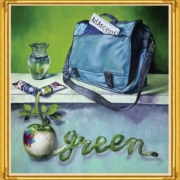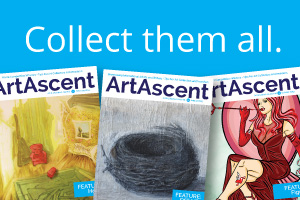Preserve your capital in art investment and get your proper dividends
The regularly delivered dividend of investing in art is its presence in your home or office. Looking at your investment as it hopefully increases in value should be a continuous pleasure.
To be assured that your investment is safe requires periodic attention. Insurance is essential. Take photographs of all your works of art, record their measurements and media, and collect in a file as much information as you can on your purchases, including invoices and printed material on the art and the artists. Put your photographs on two computer disks. Send one to your insurance agent and keep the other in a safe place. Remember to update your photograph inventory regularly so that it records everything in your collection, including recent acquisitions. Depending on the contents of your collection, you may need to modify your insurance valuations every couple of years so that your insurance coverage is adequate.
Artworks retain their value and are subject to potential increase in value only if they are preserved in excellent condition. Works on paper should be kept from direct sunlight and framed using ultraviolet filtering glass. When they are unframed, works on paper should be stored in acid-free portfolios and, ideally, in archival boxes. Most oil paintings should be properly framed to protect their edges. Works of art should be properly secured to a wall and carefully hung taking into account potential accidental encounters, most commonly with pointing fingers and less commonly with unusual, accidentally flying objects. This might sound ridiculous, but it is not unknown for oil paintings to be damaged by pets and wild interior activities.
If a work of art is damaged, it will require restoration before it is sold. This may involve a considerable expense, which will be added to the base cost of your investment. It will offset some of the gains when the piece is sold. If you do not restore your work, sell it at a discounted price. All serious collectors are intensely concerned with the condition of each work of art. The closer a piece is to what it was when it left the artist’s studio the higher its value.
To get the most of your collection – either for your own pleasure at home or for you and your client’s pleasure in an office – it is worth considering employing a consultant to assist you with installation. Many dealers and gallerists offer this service. Others will direct you to where you can hire help. An installation professional will take into account the safety of a work of art in your environment as well as arranging the display of works so that they are seen to the best advantage. Some art shines in isolation while other pieces attain their greatest impact by being viewed in relation to other works or features of interior design. However you wish to arrange your collection of art, it is imperative that it be secured in a manner appropriate to its setting. A variety of techniques are available that are suitable to deal with risks, such as earthquake and theft.
It is well worth re-hanging or re-installing your collection on a regular basis. A collection of art will appear to be entirely new and you will suddenly be able to re-evaluate the quality of a work and renew your pleasure in viewing it, if it is seen in a different context. At the end of a day either at the office or at home, you might close your eyes and ask yourself whether you really looked at your collection or a single work of art that day. If the answer is no, then perhaps it is time to re-hang the works, have them moved around or, if you have a large collection with works in storage, to replace the tired ones on the walls with fresh faces.
Your collection is an investment where the dividend is pleasure. If you are not getting this on a daily basis, you must consider doing something about it. Some collectors tire of a particular type of work or tire of a single piece. This is the time to sell. This is a no fault situation. You shouldn’t blame yourself. You didn’t make an error in acquiring a work or a whole series of works. Even the finest art can cease to elicit interest or delight. When a work or art does not deliver the dividend of enjoyment even after re-installation or a period in storage, divest yourself of it. Buy another piece that does deliver a daily dividend.
By Dr. Alan McNairn








